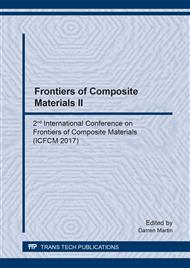p.29
p.35
p.40
p.47
p.51
p.56
p.61
p.66
p.72
Change in Crystalline Structure of Cellulose Caused by Wood Preservation
Abstract:
Сhemical interaction of cellulose with reactive groups of four-coordinate boron-nitrogen compounds is an intercrystalline process proceeding without destruction of cellulose crystalline structure; probably, the modifier molecules react with easier accessible hydroxyl groups of the amorphous cellulose regions. The formation of B-O-C ether bonds between OH groups of modifiers and more reactive hydroxyl groups of amorphous parts of cellulose results in redistribution of hydrogen bonds and, as a consequence, to rectification of cellulose macromolecules. Thus, when cellulose is treated with compositions based on four-coordinate boron-nitrogen compounds, crystalline structure of cellulose is not disrupted, hence this process can be called a "mild" modification. Such modification does not lead to accelerated aging of cellulose materials, rapid loss of strength and increases durability of wooden structures.
Info:
Periodical:
Pages:
51-55
Citation:
Online since:
May 2018
Authors:
Keywords:
Price:
Сopyright:
© 2018 Trans Tech Publications Ltd. All Rights Reserved
Share:
Citation:


